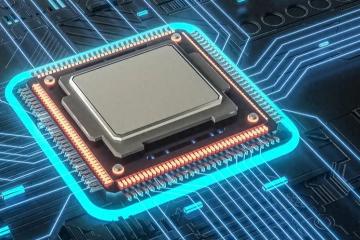Samsung is set to undergo a significant overhaul of its advanced packaging supply chain, aiming to enhance its technological competitiveness in semiconductor packagingThis extensive review, which will cover everything from materials and components to equipment, is expected to have far-reaching implications for both domestic and international semiconductor industries.
Recent reports from South Korea indicate that Samsung Electronics has initiated the restructuring of its advanced packaging supply chain, with the goal of strengthening its competitive position in this critical areaThe company plans not only to evaluate its existing supply chain but also to establish a new one, a move that could dramatically reshape the industry landscape.
One of the key areas of focus for Samsung is its equipment strategyRather than sticking to existing business relationships or partnerships, the company has decided to prioritize “performance” above all else
Advertisements
According to sources, Samsung has even considered returning some of the equipment it previously purchased for its packaging production linesWhile some of these machines were bought with specific purposes in mind, Samsung is now reconsidering their performance and suitability for the evolving needs of the market.
Several insiders have revealed that some equipment is under review for potential returns, signaling Samsung’s intent to approach this process with a "from scratch" mentalityThe overarching goal is to diversify its supply chain, which may involve replacing current suppliers or shifting to more innovative and capable manufacturersThis strict reassessment of its equipment suppliers is poised to cause major disruptions in the semiconductor equipment marketExisting vendors will be forced to reassess their product development and technological upgrades to meet Samsung's new requirements
Advertisements
Failure to do so could result in the loss of this crucial customerOn the other hand, this move opens up opportunities for emerging equipment manufacturers with advanced technology to break into Samsung’s supply chain, potentially shifting the competitive dynamics in the market.
Beyond equipment, Samsung is also changing its approach to semiconductor development and procurementHistorically, Samsung has relied on a Joint Development Program (JDP) to collaborate with a single supplier to develop next-generation productsUnder this system, Samsung would evaluate multiple suppliers but ultimately choose just one partner to bring a product to marketHowever, Samsung now believes this “one-to-one” model is too limiting and is preparing to adopt a “one-to-many” approachAccording to sources familiar with the plans, Samsung is moving toward a model that involves multiple JDP candidates, a shift expected to take effect as early as next year.
The growing complexity of semiconductor technology, particularly as it relates to advanced packaging and the need for innovative equipment, has made collaboration with a single company less viable
Advertisements
This shift reflects Samsung’s desire to break free from a closed, exclusive partnership model and create a more open, competitive environmentSuch a change would not only provide existing suppliers with new competitors but also allow competitors’ partners to collaborate with Samsung, creating an entirely new dynamic in the semiconductor development landscape.
A central driver of this restructuring is Samsung’s urgent need to bolster its advanced packaging capabilities, particularly in the area of High Bandwidth Memory (HBM). HBM, which is created by stacking multiple layers of DRAM, is a crucial component in artificial intelligence data centers, high-performance servers, and other advanced computing systemsThe manufacturing process for HBM is highly complex, requiring sophisticated packaging technology to ensure efficient chip stacking, signal transmission, and heat dissipation
- Han's M&A Faces Hurdles in Hong Kong
- 2024: A Milestone Year for AI
- Polysilicon Production Cuts to Impact PV Market
- Western Chip Firms Double Down on China
- Hong Kong Dividend Plays Offer Value
Advanced packaging technology, therefore, is critical to gaining a competitive edge in the HBM market.
Samsung has already invested significant resources into research and development in the advanced packaging sector, with a particular focus on improving its standing in the HBM marketAlongside SK Hynix, Samsung is one of the largest suppliers of HBM memory chips globally, and the competition is fierceSamsung plans to use more advanced 1c DRAM in its HBM4 core chips, giving it a technological edge over competitors like Micron and SK Hynix, which are using 1b DRAM in their HBM4 offeringsBy optimizing its advanced packaging supply chain, Samsung hopes to further solidify its leadership in the HBM sector, thereby securing a larger market share.
It’s important to note that while this supply chain restructuring is currently focused on the advanced packaging sector, the changes could have broader implications for other parts of Samsung’s semiconductor operations

Industry insiders have pointed out that front-end processes, such as wafer fabrication, have not yet undergone the same level of supply chain scrutinyThis is partly due to the current focus on technology upgrades, migration, and process transitions in this area, rather than large-scale new investmentsHowever, as technological advancements continue and new investments begin to ramp up, it is possible that Samsung will apply similar supply chain reforms to its front-end processes in the future.
Should this expansion of the supply chain review take place, Samsung’s entire semiconductor production process could operate under a new supply chain systemThis would encompass everything from raw material procurement and equipment supply to product manufacturing, resulting in a more efficient allocation of resources and better technological coordinationSuch a transformation could greatly enhance Samsung’s competitiveness in the semiconductor market, helping to secure its position as a leading player in the global semiconductor industry for years to come.
This bold move by Samsung to rethink and reform its supply chain represents a major shift in how the company approaches semiconductor manufacturing